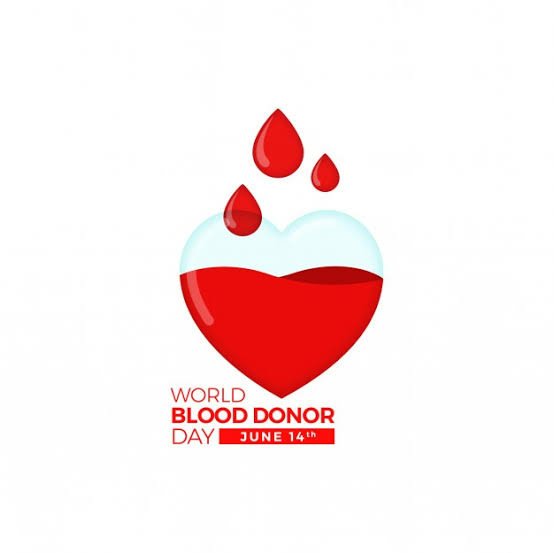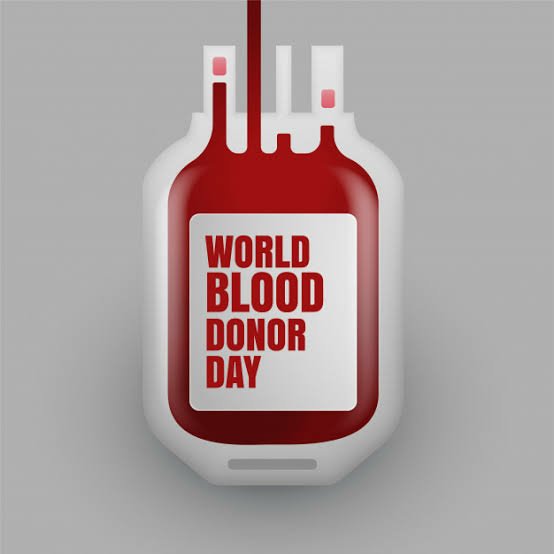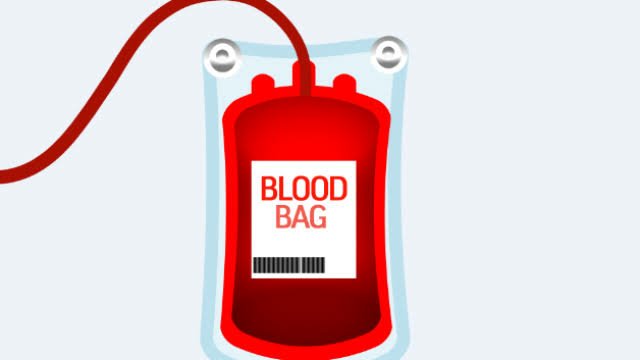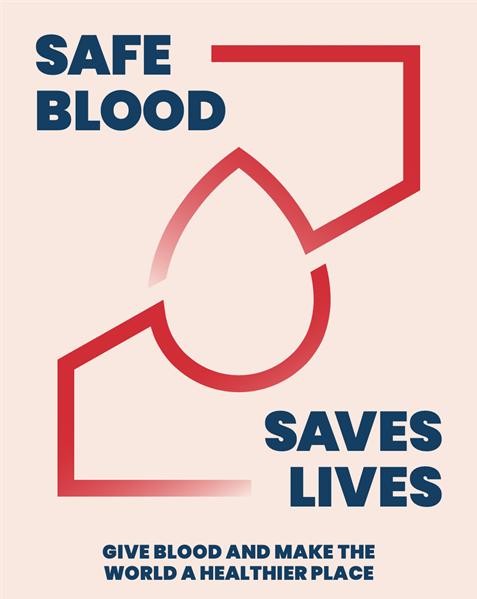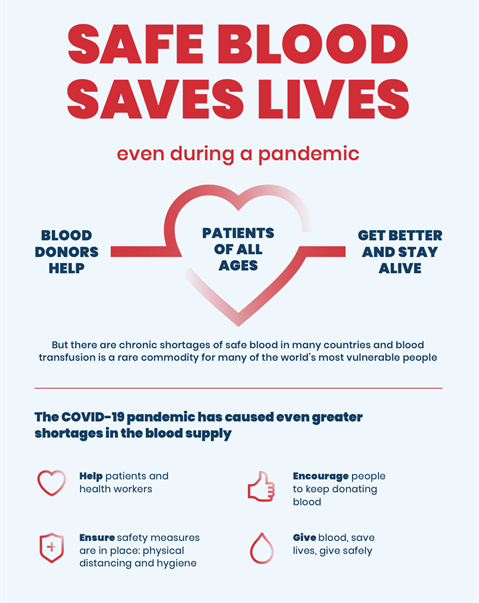The World Health Organization(WHO) marks the world blood donor day on June 14 every year. It was first organized in 2005 by a joint initiative of World Health Organisation, the International Federation of Red Cross and Red Crescent Societies to raise awareness of the need for safe blood and blood products, and to thank blood donors for their voluntary, life-saving gifts of blood. The theme for this year’s awareness campaign is “Safe Blood Saves Lives.”
The need for safe blood is universal. Safe blood is critical both for treatments and urgent interventions. It can help patients suffering from life-threatening conditions live longer and with a higher quality of life and supports complex medical and surgical procedures.
Blood is also vital for treating the wounded during emergencies and has an essential, life-saving role in maternal and neonatal care. But access to safe blood is still a privilege of the few.
Here Are Some Facts About Blood Donation:
- Of the 118.5 million blood donations collected globally, 40% of these are collected in high-income countries, home to 16% of the world’s population.
- In low-income countries, up to 54 % of blood transfusions are given to children under 5 years of age; whereas, in high-income countries, the most frequently transfused patient group is over 60 years of age, accounting for up to 75% of all transfusions.
- Based on samples of 1000 people, the blood donation rate is 31.5 donations in high-income countries, 15.9 donations in upper-middle-income countries, 6.8 donations in lower-middle-income countries and 5.0 donations in low-income countries.
- An increase of 7.8 million blood donations from voluntary unpaid donors has been reported from 2013 to 2018. In total, 79 countries collect over 90% of their blood supply from voluntary unpaid blood donors; however, 56 countries collect more than 50% of their blood supply from family/replacement or paid donors.
- Only 55 of 171 reporting countries produce plasma-derived medicinal products (PDMP) through the fractionation of plasma collected in the reporting country. A total of 90 countries reported that all PDMP are imported, 16 countries reported that no PDMP was used during the reporting period, and 10 countries did not respond to the question.
What you can do
- Become a blood donor today and help make the world a healthier place.
- Commit to being a regular donor and give blood throughout the year.
- Encourage your friends and family to become regular blood donors.
- Volunteer with the blood service to reach out to members of your community, provide care to donors, and help manage blood donation sessions/drives.
- Find out your blood type and register as a blood donor.
- Participate in World Blood Donor Day with your social networks.Blood donations are needed all over the world to ensure individuals and communities have access to safe and quality-assured blood and blood products in both normal and emergency situations.
Blood transfusion saves lives and improves health, but many patients requiring transfusion do not have timely access to safe blood. Providing safe and adequate blood should be an integral part of every country’s national health care policy and infrastructure.
WHO recommends that all activities related to blood collection, testing, processing, storage and distribution be coordinated at the national level through effective organization and integrated blood supply networks. The national blood system should be governed by national blood policy and legislative framework to promote uniform implementation of standards and consistency in the quality and safety of blood and blood products.
Why have you not donated blood yet? Walk up to the blood donation centre closest to you and save a life.


